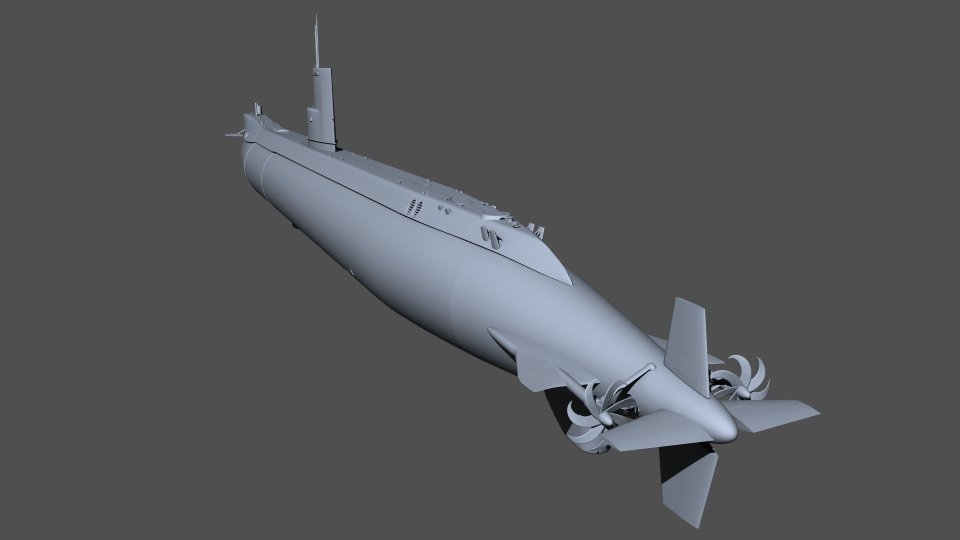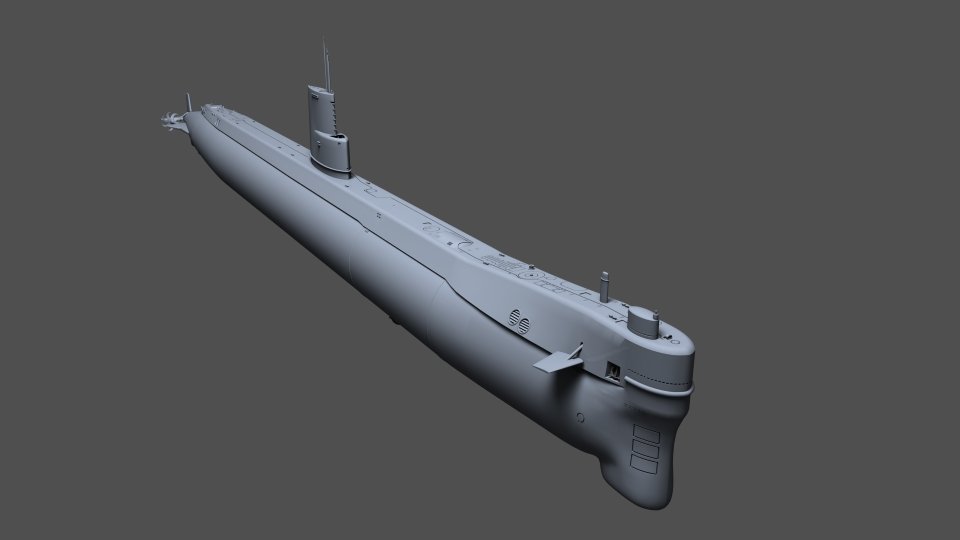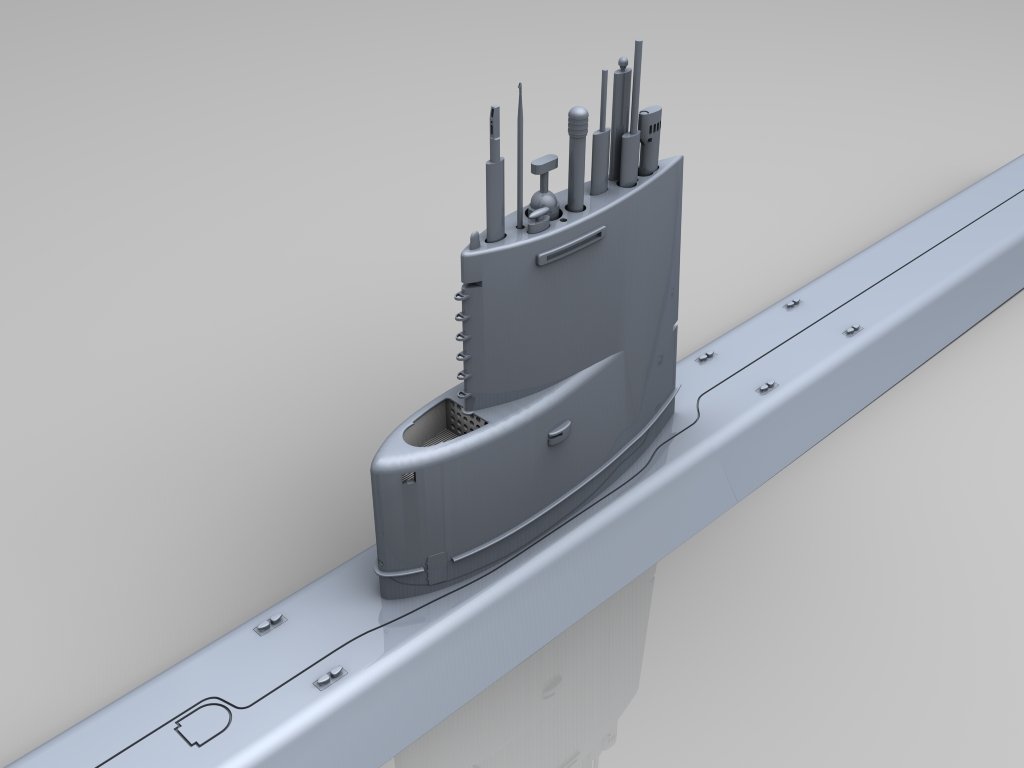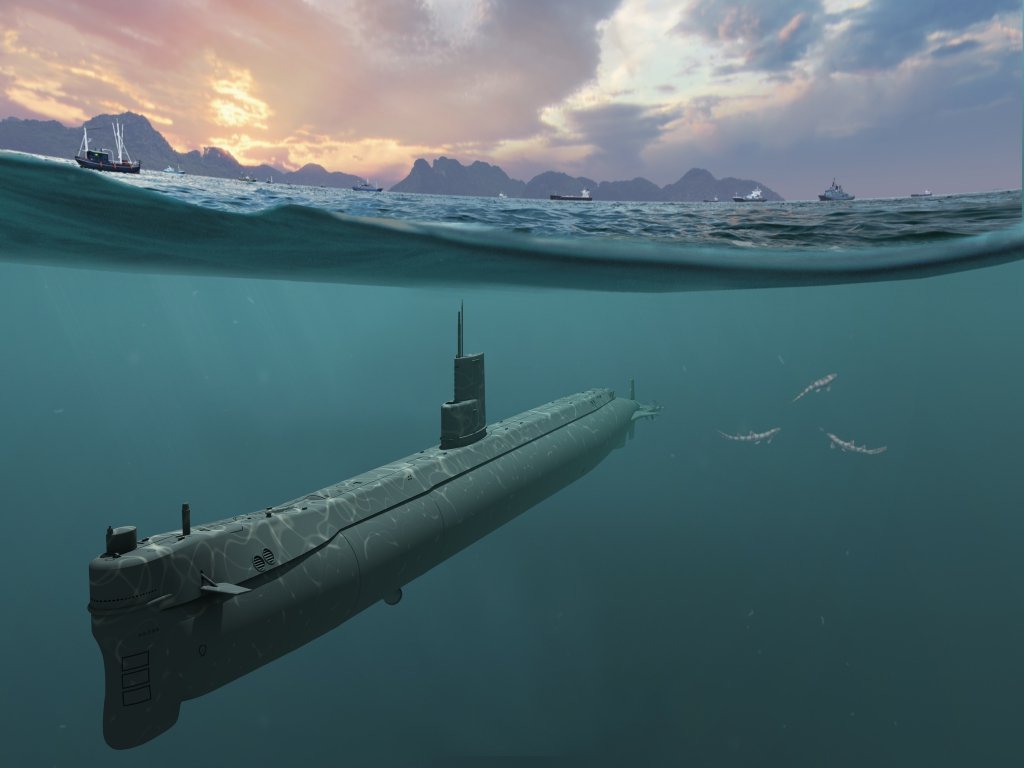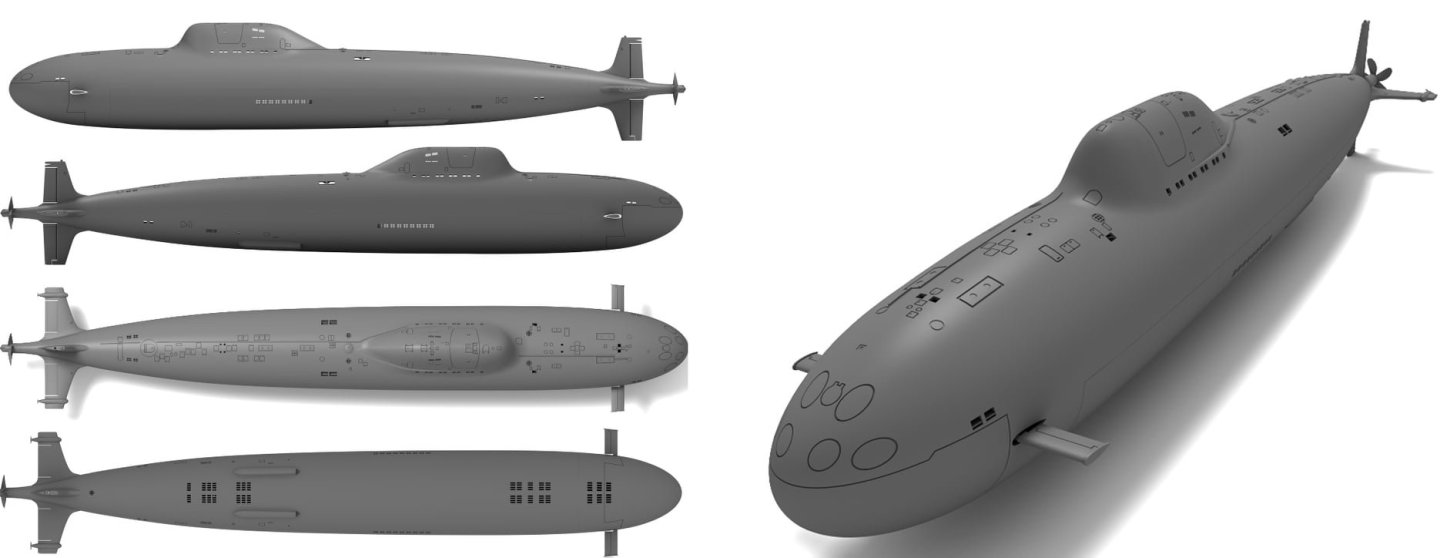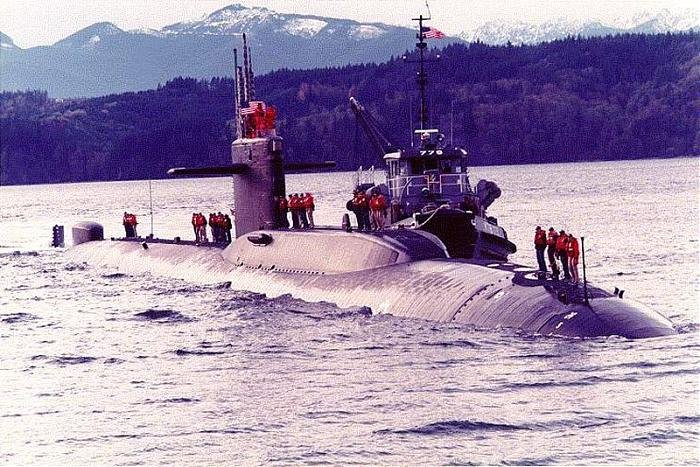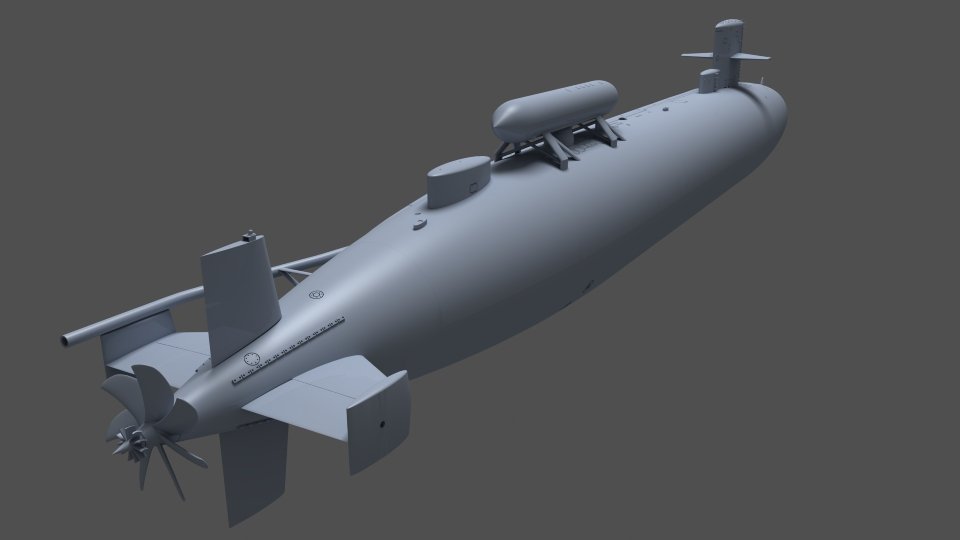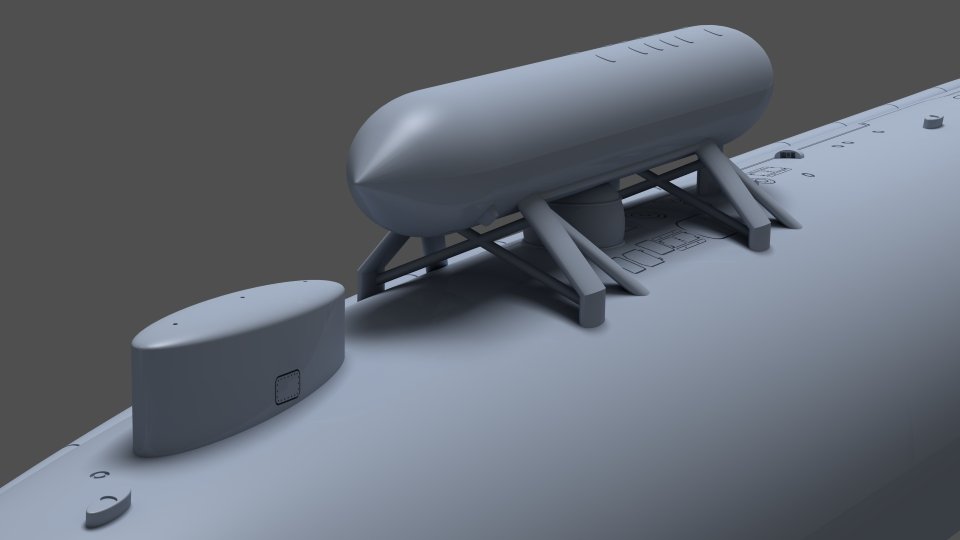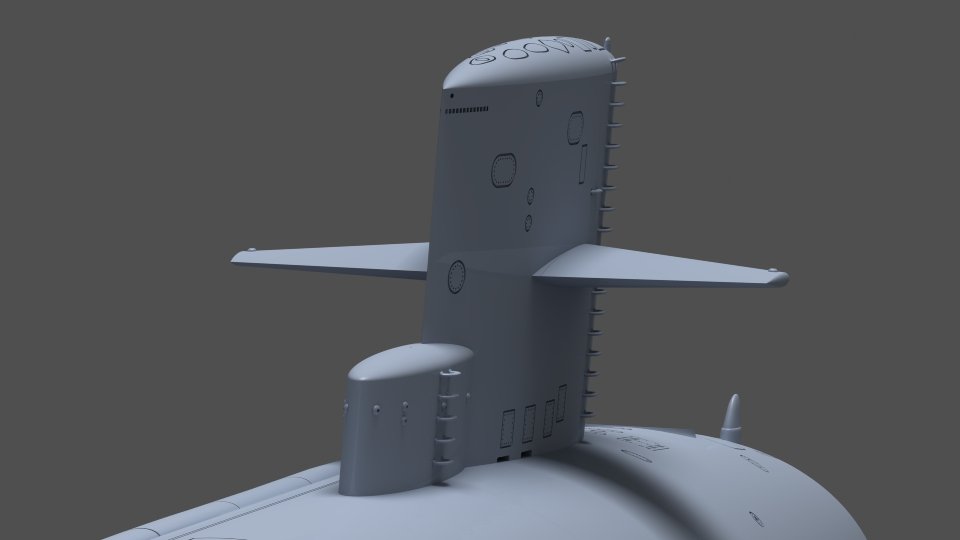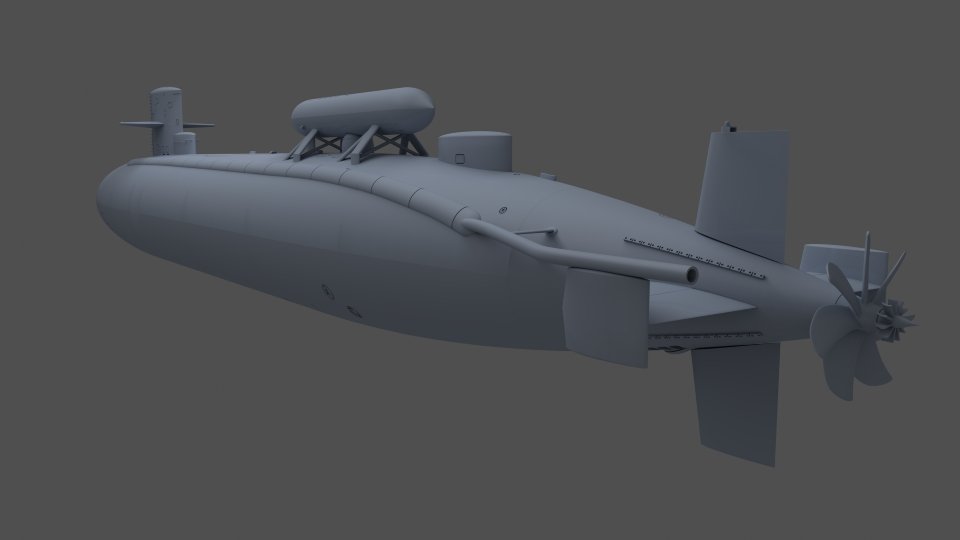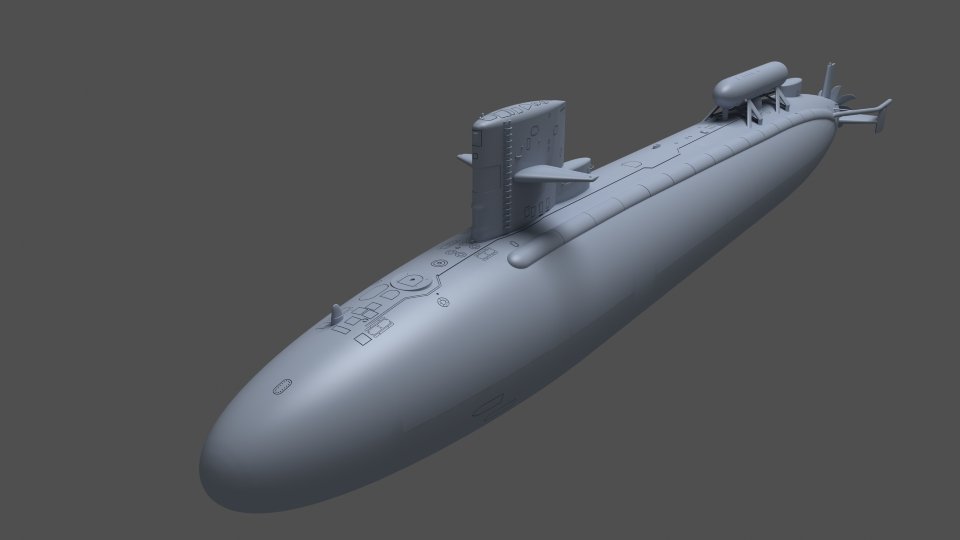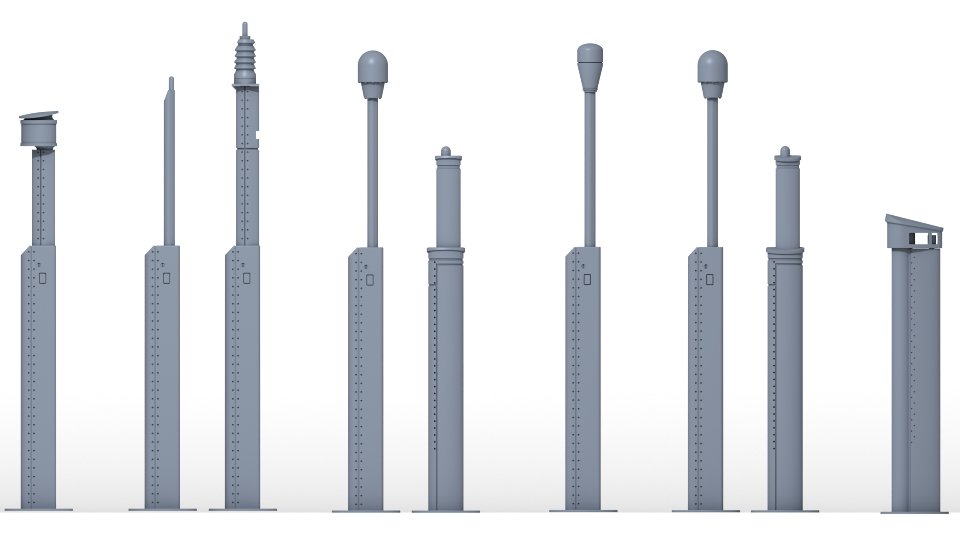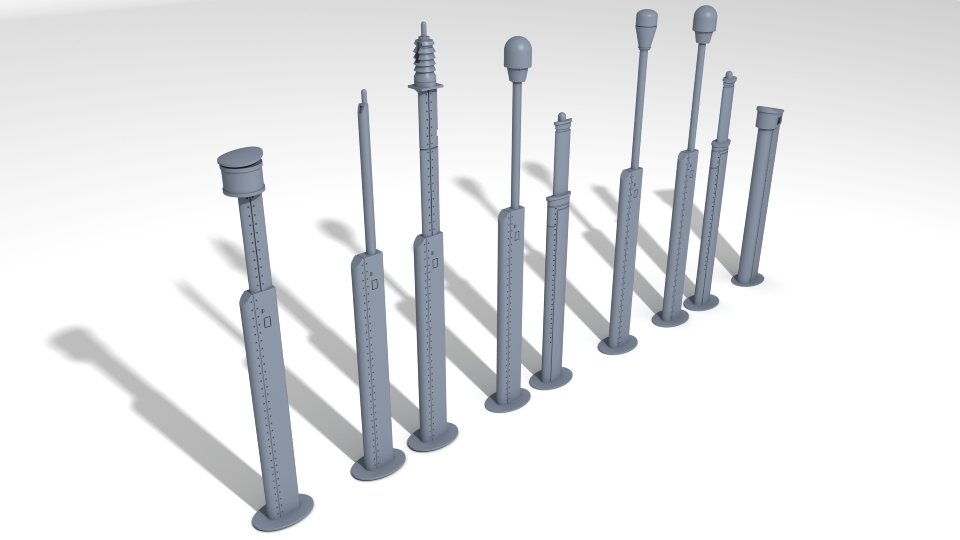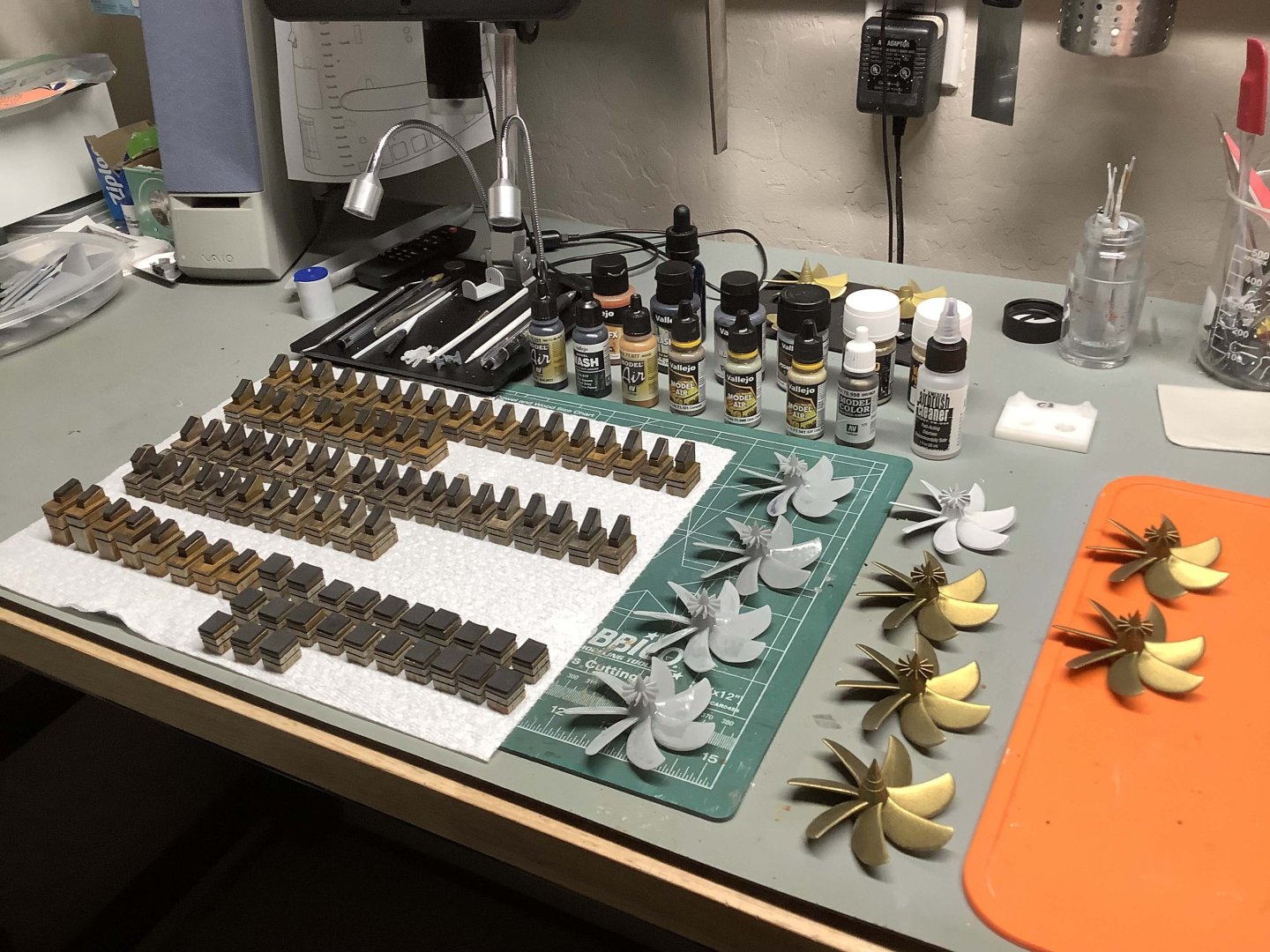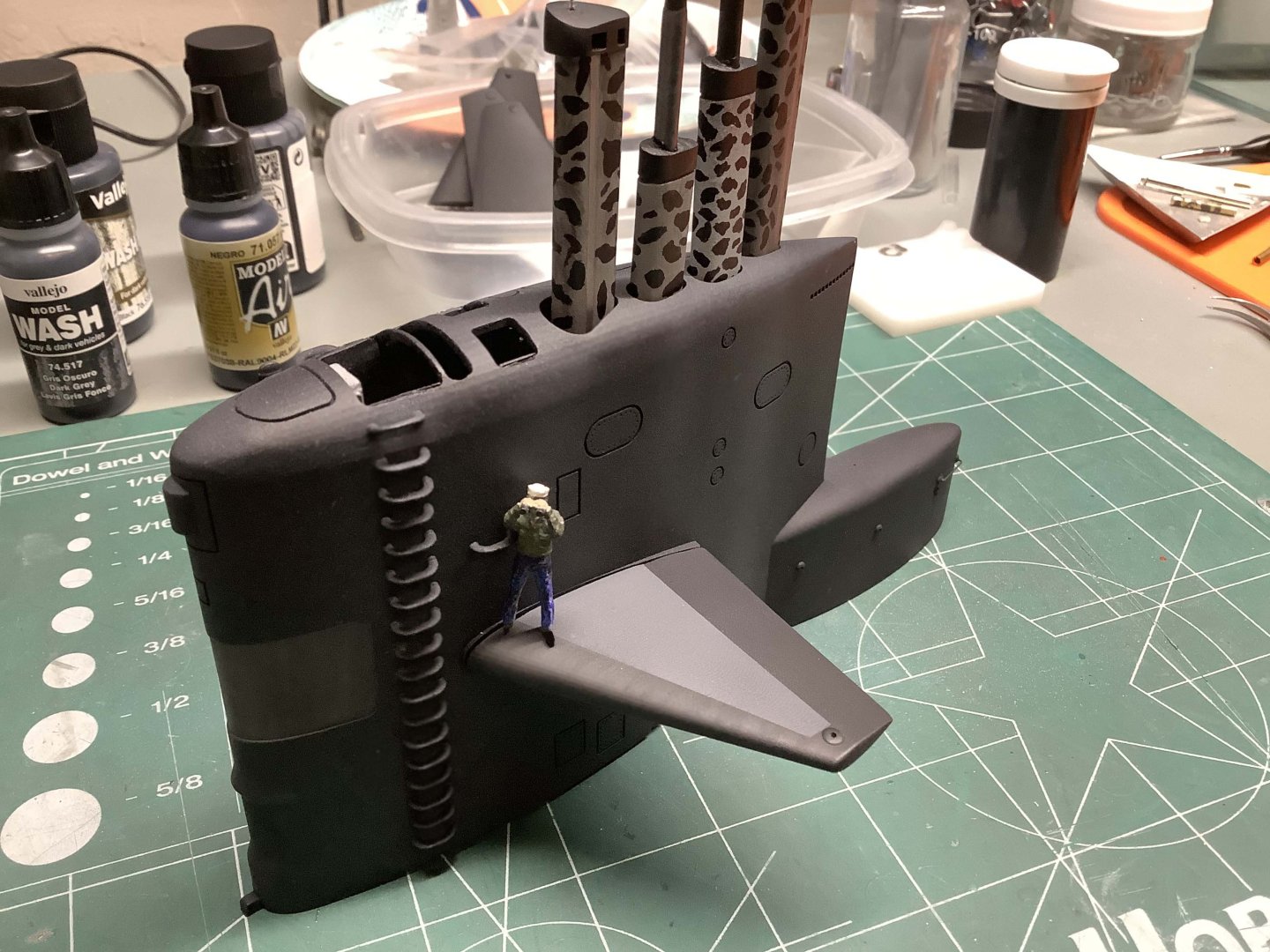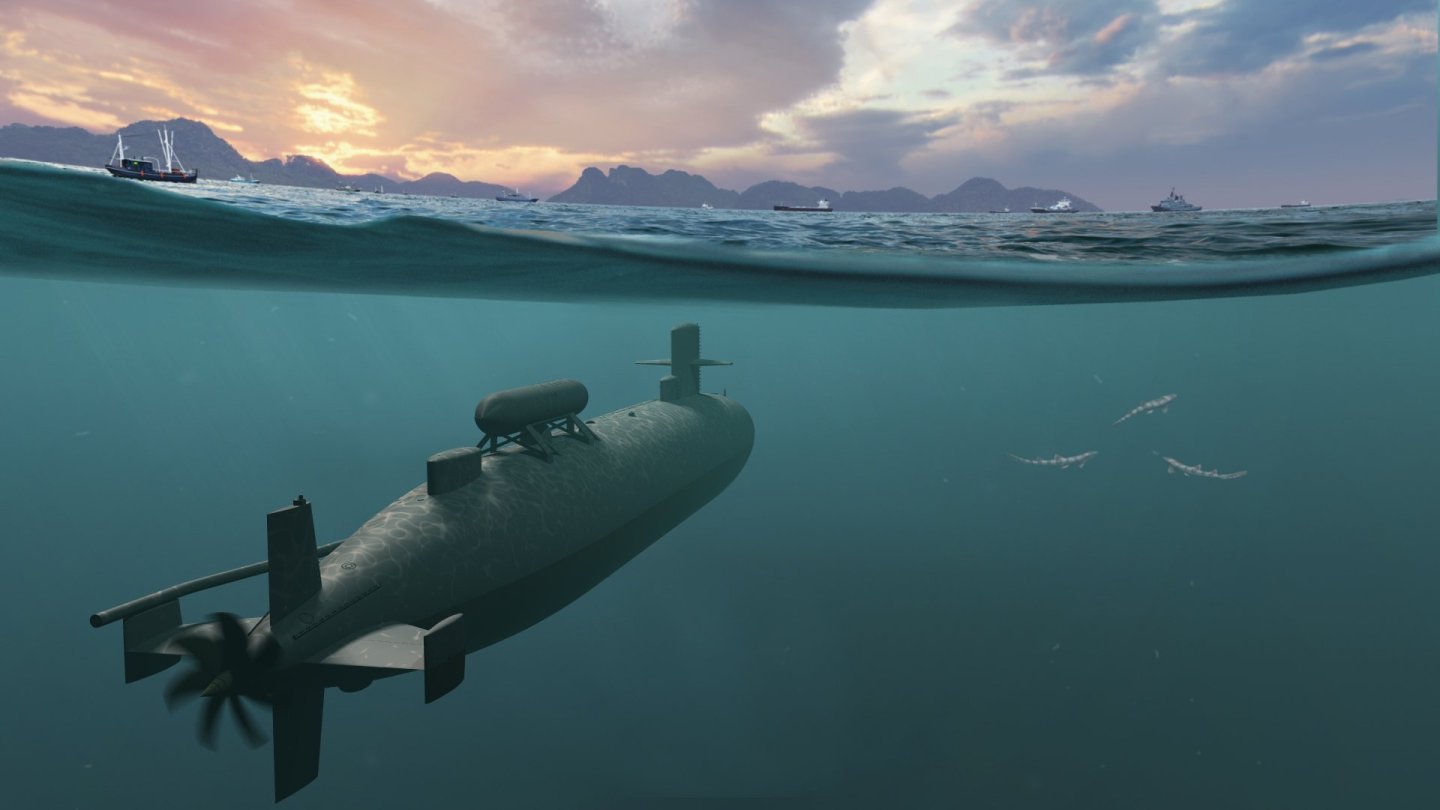-
Posts
22 -
Joined
-
Last visited
Content Type
Profiles
Forums
Gallery
Events
Everything posted by CCClarke
-
Lots of good replies posted in response to your questions. 1. I bought a resin printer five years ago, (Phrozen Mighty 4K) along with a cure station, (-also from Phrozen, using a turntable with UV lights surrounding it, with a UV-proof plastic cover) for just under $500 during an Amazon Prime Sale. I keep a log for each print to record how long they took, and any lessons along the way. The elapsed time is important since decent LED arrays are rated to 2000 hours. I'm on print #297 with zero issues with the printer. Any problem prints were my fault and easy to diagnose. Depending on the size requirements for your needs, you may be able to get by with a small printer. Check the print volume before pulling the trigger. I'm at the point now where I need a larger one and will upgrade soon. I'll keep the smaller one for small parts. I printed a set of anchors yesterday that took six hours to design, and an hour to print. Each is smaller than my small fingernail. The quality is always amazing! As for cleaning, I use one plastic tub to spray the build plate/printed parts with 91% IPA using an old Windex bottle, let them soak for three minutes, dry them with my airbrush set to 60 psi, then repeat the process once more. This saves a small fortune in submerging everything in IPA -as many other do. I dump the leftover IPA from the cleaning tub (usually about 1/8 of a cup) into the plastic-lined trash can next to my bench with some paper towels to absorb it. The trash can goes outside where the IPA can evaporate. I went from buying gallons of IPA, (and dealing with the aftermath) per year to a few quarts using this method. A foam brush also helps when cleaning large parts. If I find any residue, I use an IPA-soaked cotton swab to clean it, and blast it with air to evaporate any remaining IPA. After that, I place the build plate in an identical plastic container with enough hot water to submerge the build plate to cover the surface the parts are adhered to. The hot water loosens the parts and expands a miniscule amount allowing the parts to be removed with a slim metal spatula. I let the removed parts soak for a couple of minutes making part support removal easy. For some smaller parts, (like the aforementioned anchors) I leave the supports on, since fishing them out of the water is a PITA. Once all the parts are out, I blow-dry them once more. Some people like the vortex cleaning stations, but again, you're dealing with a larger mess when trying to cure/re-filter IPA in bulk. Time is one thing I never seem to get enough of. 2. Resin is a skin irritant and any resin dust from sanding is not something you ever want to breathe. Nitrile gloves are needed when handling uncured parts. A respirator and is recommended when sanding large parts. Eye protection should be worn anytime liquid resin is present. Some resins put out stronger fumes than others. Unless you have a dedicated indoor space with a good way to ventilate it (via air extractor venting outside) the garage is the place to print. Spill resin on indoor carpet and you're in real trouble. Carpet should never be near a workbench anyway. 3. Temps. Resin changes viscosity (thinner when hot, thicker when cold) which can greatly affect how the parts print. Ideal temp is between 70-75 for most resins, but check the mfr's recommendations before ordering any. In New England, I was limited to printing during warmer weather. You can use a heated enclosure made for 3D printing but if the duty cycle is too great, print quality will suffer. I compromised when I moved to Arizona three years ago on a two-car garage (I wanted the extra work space afforded by a three-car garage) but changed my mind because this one came with a dedicated heat pump - I can print year-round now in comfort with consistent results. I had to replace the large, cylindrical hot water heater to a small, wall-mounted on-demand unit that is more economical, freeing up additional space. If you're on social media, there are plenty of manufacturer sites where members can bitch and moan, with lots of failed print pictures. Besides keeping a personal print log, this is another great way to learn from other's mistakes, or learn how to troubleshoot (very rare) hardware failures. Like I mentioned, my printer has been trouble-free. The majority of my prints take 15-18 hours, and it works as well as when I first started. A handy tool in my arsenal is a Phrozen Cure Beam. This works well to cure small parts in < 10 seconds or the inside of the hulls I build. A set of silicon mats, (resin doesn't stick to them are under my printer, (in case of a printer spill) and my work area where I clean parts. Any printer that comes with a hook to hang your build plate to drip dry is a bonus. It recovers a little bit of the excess resin and decreases the amount you need to clean off the top of the plate by hand. I used an FDM printer to make a hanger for mine that I found for free on Thingverse. When I switched from FDM to resin printing, (far less sanding and resolution you'll never get from a .2" nozzle extruding hot plastic) I didn't like the cleaning phase, but once you get used to it, (and see the quality of your printed parts) it isn't a big deal and takes 15 to 30 minutes - 45 min or so if you print fifty parts at a time like I sometimes do. If you have any more questions, fire away. Someone here will be able to answer them. CC
-
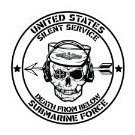
3D printing material question
CCClarke replied to CPDDET's topic in CAD and 3D Modelling/Drafting Plans with Software
FDM printing is ideal for those who enjoy sanding and aren't interested in small, detailed parts. Using wood-like material is irrelevant since it's going to be painted over anyway and usually requires a larger nozzle diameter, reducing details further. I cut my teeth on commercial FDM printers that cost thousands, and bought a $350 Phrozen resin printer just to see what it could do. I was immediately blown away by the intricate details it could produce. Minimal sanding was the icing on the cake. My time is the most important commodity I have control over. Cons: Resin printing requires a dedicated, well-ventilated space and parts cleaning can be messy, despite the vortex cleaning stations available. 91 IPA is one consumable along with resin, but I've learned how to minimize how much IPA I need, using a discarded Windex sprayer, foam brush, and compressed air (60 psi from my air brush) to blow the excess resin from the .1 to .4 mm details. A half quart bottle of IPA lasts weeks instead of submerging the entire part in a plastic bin and contaminating a larger volume of IPA which becomes less and less effective over time and then has to be disposed of. For test fixtures and jigs, I still like FDM prints and farm those out to friends to produce my designs. Learning how to properly orient parts in a slicer takes time to acquire -usually through multiple failures (part of the learning process.) Resin printing is not plug-and-play as advertised despite new advances in printing technology. Being able to create parts with injection-molded precision at home is pretty darn cool though, and worth a look if that's what you need. My first resin model renders (for an RC submarine project) and the printed results were virtually identical. -

Decals for draft markings
CCClarke replied to g8rfan's topic in Painting, finishing and weathering products and techniques
I highly recommend this guy: Josh at BedlamCreations.com. He's my go-to guy for waterslide (white) draft marks. I told him what font I needed, and he scaled multiple sets for me. Easy to work with and reasonable pricing. CC -

Beginner CAD recommendation
CCClarke replied to krith's topic in CAD and 3D Modelling/Drafting Plans with Software
There could be as many recommendations as there are different software applications for beginning CAD users. Two of the most powerful and popular CAD applications: Fusion 360 has a free version and there is a lot of free training available. The same goes for Blender. -
Jeff, Are you a proficient SolidWorks modeler? If so, there is unlimited potential for use of a 3D printer in this hobby over "old school" fabrication, which is another art form. 3D printing vs established model building methodology has and will be debated for years. I believe there is more than enough room in our hobby for both techniques. A digital fabrication workflow from design to finished part has advantages that are hard to beat, especially being able to up-rev a design and repeatability. I know one master modeler who makes his own propellers the old school way, then makes a mold to cast metal parts. His excellent skills produce a first part measured in days, sometimes weeks as he solders the brass blades onto the hub with a template, then files the filets to a smooth finish. While I certainly marvel and appreciate the skills to produce parts this way, the time required to get the same effect with perfect tolerances can be drastically reduced with a digital design workflow, which is another form of creativity once digital design (or CAD) techniques are mastered. Time is one of my two most precious dwindling commodities, (the other being my health) so I prefer using the newer technologies available to enable me to make the most use of it. The additional time saved translates to more model-building opportunities. Once painted, I doubt most observers can tell the difference between a hand-machined cannon or cast part or a digitally printed part.
-
This is her in her second Ocean Engineering revision on the day she arrived for her homeport change from Mare Island to Bangor, WA in Nov '94. I rode her in when this picture was taken. As you can see, the hull is covered in SHT, (anechoic tiles) which ought make 3D modeling fun. The extra lengthening of the hull required larger fairwater planes for better depth control, so a pair of Los Angeles class planes were installed, higher on the sail.
-

3D printing material question
CCClarke replied to CPDDET's topic in CAD and 3D Modelling/Drafting Plans with Software
I use Phrozen ABS-like resin (compatible w/8k) exclusively. It flexes without shattering and handles reasonable (110 direct sun in AZ for hours) heat without warping. Highly recommended. -

Cold War madness
CCClarke replied to Martes's topic in CAD and 3D Modelling/Drafting Plans with Software
If you like that, consider: Command Modern Air/Naval Operations: Fully immersive, excellent graphics, with customizable, real-world scenarios and weapons. -

What should I avoid when creating *.stl files?
CCClarke replied to Jsk's topic in 3D-Printing and Laser-Cutting.
Just found this site hidden in a folder. When manually orienting a print, the first question that comes to mind is, what angle is best? I often opt for 30/30 (pitch and roll) but sometimes it isn't suitable because the part is too large and those angles would have it extend beyond the build plate. Here's one way to determine the best print angle for a resin printer that might be of help: Angle calculator for smooth surfaces in resin printing – RC87 -

What should I avoid when creating *.stl files?
CCClarke replied to Jsk's topic in 3D-Printing and Laser-Cutting.
Since the OP is using resin printing, I'm trying to avoid discussing FDM printing in detail, but comparisons are useful for anyone on the fence regarding which technology is best for their needs. I've attached a few shots for comparison for the same shapes but with differing numbers of sides to illustrate polygon faceting. Each set shows the mesh on the surface and the surface without the mesh. (Multiple display modes are essential to object modeling. I hope the all-quad polys in the examples are large enough to show the differences. The sphere on the left has 24 sides with 12 segments. The one on the right is doubled with 48 sides and 24 segments. If you look at the edges closely, you can see the faceted surface more pronounced on the sphere on the left. The cylinders have 24, 48, and 180 sides from left to right. Increased geometry creates a smoother surface. At some point, adding additional geometry becomes overkill. If you print tiny parts, you can get away with less geometry, but large parts will show the difference clearly. It all depends on what look you need based on the part being printed - unless you're a masochist that enjoys sanding. All STL (and OBJ) files are triangle-based, meaning a four-point polygon is halved diagonally. Th eg-code printers use is triangle-based. Triangles also eliminate non-planar polygons, since a triangle can't be "bent" no matter how the three points are connected. Non-planar polygons don't render properly, but that's irrelevant to this discussion. When modeling, I always use quads, (four-point polygons) and they're automatically converted to tris, (three-point polygons) if the file is exported as an STL or OBJ. If I need to reverse-engineer an OBJ file, the triangles must be combined into quads for ease of mesh manipulation. -

What should I avoid when creating *.stl files?
CCClarke replied to Jsk's topic in 3D-Printing and Laser-Cutting.
A higher poly count can bog some computers down during the modeling phase, but I have never experienced detrimental effects on the slicer's performance. Look at models on ThingVerse and note how faceted many are because the modeler didn't add enough geometry. There's a noticeable difference between a 48-sided cylinder and one with 360 sides as far as smoothness/finish. It's a common mistake that can ruin an otherwise nice effort. Orientation angle depends a lot on the geometry of the object being printed. If designed well, I can print hull sections vertically without a problem and all support attachment points remain hidden, cutting laborious post-support removal cosmetic restoration for a smooth finish. For smaller, organically-shaped parts, I'll start with auto-orientation before adding additional supports manually. Optimal printing results are a combination of experience and a well-designed part. Mistakes are part of the learning process if they aren't repeated. Keeping a Print Log adjacent to the printer for every print has been invaluable, allowing me to track how many hours I have on the printer's screen, maintenance and record problems and solutions. I've added a handy guide I hope will illustrate my post more clearly. CC Proper Part Orientation.pdf -

What should I avoid when creating *.stl files?
CCClarke replied to Jsk's topic in 3D-Printing and Laser-Cutting.
I'll show you my two go-to tools I reach for often when post-processing parts after cleaning and support removal, which begs the question: Is your friend the printer giving you completed/cured parts with or without supports removed? But first, The Why Most 3D prints will have tiny pock marks where the supports contact the part. It takes a little practice, but with experience, you can manually place the supports in areas that any leftover support blemishes aren't visible. This is a good reason why the (vertical) orientation of the stern in the last shot above prints so cleanly. Most of the support structure is located inside. Even though I usually use the Automatic Orientation and Support functions in Chitubox Pro, I still add a few where I think they'll improve the part quality. Just for educational purposes to illustrate the differences between vertical and auto part orientation, I've included one sliced vertically-oriented Stern, and two shots of the stern from different angles after slicing in Auto Orientation mode. The print time differences aren't too drastic, (displayed on the left side of the slicer screen) but the number of supports contacting the exterior is. Which one would you rather touch up after the supports are removed? To fill the tiny pock marks, I apply resin to the area, smooth it with a cotton swab, feathering the edges and use a UV curing wand to cure the area. Another swab dipped in IPA, followed by a couple of swabs dipped in water get the surface ready for sanding. I've found this reciprocating sander from DSPIAE to be invaluable to reach places my other sanding tools can't and it quickly smooths the surface. There's a tip for every occasion supplied along with a few sheets of pre-cut adhesive-backed sanding paper. The Phrozen Cure Beam UV wand (a pair are supplied) is the perfect way to cure resin after applying it to the hull for support contact repairs, interior spaces that a standard cure station can't illuminate properly, or bonding parts and filling the leftover seams after filling them with resin. These have saved me hours of re-work and I highly recommend them. Both are available on Amazon. CC -

What should I avoid when creating *.stl files?
CCClarke replied to Jsk's topic in 3D-Printing and Laser-Cutting.
Lots of good information here. I'll try to add a little more. Since you aren't doing the printing, I won't get too technical. These are requirements before starting any resin print: 1. The printer build plate is level/calibrated. 2. Slicer settings are calibrated for the resin being used. 3. Printing is performed in a temperature-controlled environment. Your first picture speaks volumes. Most parts, (especially long, thin ones) are tough to reliably print parallel to the build plate, (no matter how well supported) without problems, though there are exceptions. Parts need to be angled -or vertical, depending on the design when hanging from the build plate. All of the "Pro" slicers, (usually an upgrade from the vendor's free version) include auto-orientation. In most cases, the slicer-determined part angle is adequate, but it depends on the design of the part. You can print parts vertically, (suspended from the raft by supports) if they follow certain design guidelines. A part with gentle contours is ideal. Any overhangs parallel to the build plate require supports, but orientation is an important consideration for best results. The first two pictures I've attached illustrate this point, with two types of orientations, (Parallel to the build plate and angled) based on the part's geometry depicted. The torpedo afterbodies are vertically printed, with supports under the mid-point where the forebody will be bonded. Since its a flat surface, and subject to micro-sagging, a little sanding will quickly remove any support artifacts. FYI: The control surfaces are oversized-since these are meant to be handled by young students as part of a STEM outreach program I'm involved with. Magnets are bonded inside the body in the two places the torpedo contacts the stand, (also containing magnets) allowing the model to be removed and passed around. The slope of the top section flares away from the main body gently, requiring minimal support structure. A (unseen in the shots) hole inside the torpedo propeller shroud where the propellers live also serves to prevent suction forces from deforming the part during the build plate lift cycle. The supports that run parallel to the body are latticed, meaning the supports brace one another, minimizing the chance of a support failure that would lead to deformation of the area they're supposed to be supporting on the model. Layer lines are minimal, and the supports are easy to remove. Note the rafts on the build plate. These use less resin than a full raft and make it easier to remove the parts, minimizing breakage. Note the (3) torpedo mounts are angled. (Each torpedo requires two.) This ensures the mount's flat faces remain flat. I could have angled the torpedoes, but there would be many more support artifacts on the model that have to be filled and sanded afterwards. I'd rather wait longer for a vertically oriented print, (more layers than if it were at an angle = longer print time) than fill support pock marks with resin manually, then cure and sand. (I'm lazy that way.) The 4th and 5th pictures below illustrate thin, round part orientation for submarine sail handrails. Angled "skate" style rafts are used to minimize breaking during removal from the build plate. The part orientation works with the curve of the handrails, so they are built-up gradually while printing. -Notice the supports where they attach to the rails. Most are interlocked and all feature pointed tips where they contact the part. The four upper and lower rudders have a 3mm hole for a brass shaft. See how the holes gently slope upwards at the bottoms and then curve upwards at the top? No supports are needed, and the holes have perfect geometry and more importantly, dimensional tolerance, which is press-fit. Even the bridge compass, (the two smallest parts) have tiny handles about .1 mm thick. Properly angled, these print perfectly. Modeling: You said you're using a Sub-D modeling app. Are you "freezing" the sub-D polys with a high enough sub-division level before saving the file? Higher levels minimize faceting insuring the best possible surface finish. A lot of designers mistakenly believe a slicer will make the model's geometry smooth. Slicers can add vent holes but cannot change the model outward appearance otherwise. As mentioned, sacrificial stand-offs can be used for certain parts but require removal/re-finishing post-print. The 6th picture shows an example, with the sacrificial supports highlighted in orange. The last picture shows how I set it up for printing in the slicer - I added supports to the lower sacrificial supports, but the uppers were left alone. The lowers would probably print fine without supports, but why take a chance on a long print? The stern of the VA class submarine is printed vertically. The hull slopes inward, supporting the previous printed layer without supports. The stern planes, dihedrals, and shroud stand-offs all use sacrificial supports modeled into the stern. These angle outwards, supporting the outward angled parts of the stern and get cut out after curing, without the need for standard supports. You want to model them very thin and/or add a slight beveled inset where they meet the hull for easier removal. Properly removed, a little sanding erases any hint they ever existed. Modeling error-detection/correction: You already know what a PITA this can be to properly correct. Occasionally, errors are detected by the slicer when the part is imported. Most of the Pro-version slicers are able to eliminate most problems, but I try to correct them in the modeling phase before exporting as an OBJ/STL. If you have a feature in your modeling program that allows you to merge nearly coincident points in the mesh that's a plus. Merging points can create 2-point polys, which will be identified by the slicer as non-manifold polygons. Those have to be found and removed as well. I'll stop here. If you have any specific questions related to printing that I haven't answered clearly enough, feel free to ask questions and I'll try to do better. CC -
Round-nose pliers as stated, come in multiple diameters. Their chief use has been in the electronics industry for decades to form wires prior to attaching them to terminals and posts. I attended a very tough NASA-level electronic repair course once where any marks left on the conductors resulted in a failed inspection. We placed Kapton tape on the ends to prevent any noticeable conductor deformation. I continue to use these for my ship-building, and still wrap the ends. Precision flat nose pliers are also very useful. CC
-
Old thread, but nice to see, since I specialize in designing and 3D printing (resin) of US Nukes. Attached are a couple of shots of my latest work for a museum project; (a Sturgeon-class boat as well): USS Parche as she appeared in the early 80's in 1/72 scale. Since the latter version of the ship, (extensively modified again in the early 90's) has a 100' extension forward of the sail, I'll re-use the aft portion, (minus the DSRV Simulator atop the aft escape trunk) and re-model the forward half of the boat. After weathering the lower hull, the sail and DSRV sim will be bonded to the hull and made ready to be mounted on 90 keel blocks, bonded to a base painted to resemble a concrete drydock basin. I also included a render of the 3D model in the wild.
-
I use photos to build 3D objects when detailed plans aren't available. The process isn't simple or fast, but it's possible if you have the modeling experience. When I think I'm close, I place the photo in the background and rotate the model to approximate the photo, then change anything that doesn't match up. These are relatively simple models, which helps.
About us
Modelshipworld - Advancing Ship Modeling through Research
SSL Secured
Your security is important for us so this Website is SSL-Secured
NRG Mailing Address
Nautical Research Guild
237 South Lincoln Street
Westmont IL, 60559-1917
Model Ship World ® and the MSW logo are Registered Trademarks, and belong to the Nautical Research Guild (United States Patent and Trademark Office: No. 6,929,264 & No. 6,929,274, registered Dec. 20, 2022)
Helpful Links
About the NRG
If you enjoy building ship models that are historically accurate as well as beautiful, then The Nautical Research Guild (NRG) is just right for you.
The Guild is a non-profit educational organization whose mission is to “Advance Ship Modeling Through Research”. We provide support to our members in their efforts to raise the quality of their model ships.
The Nautical Research Guild has published our world-renowned quarterly magazine, The Nautical Research Journal, since 1955. The pages of the Journal are full of articles by accomplished ship modelers who show you how they create those exquisite details on their models, and by maritime historians who show you the correct details to build. The Journal is available in both print and digital editions. Go to the NRG web site (www.thenrg.org) to download a complimentary digital copy of the Journal. The NRG also publishes plan sets, books and compilations of back issues of the Journal and the former Ships in Scale and Model Ship Builder magazines.


